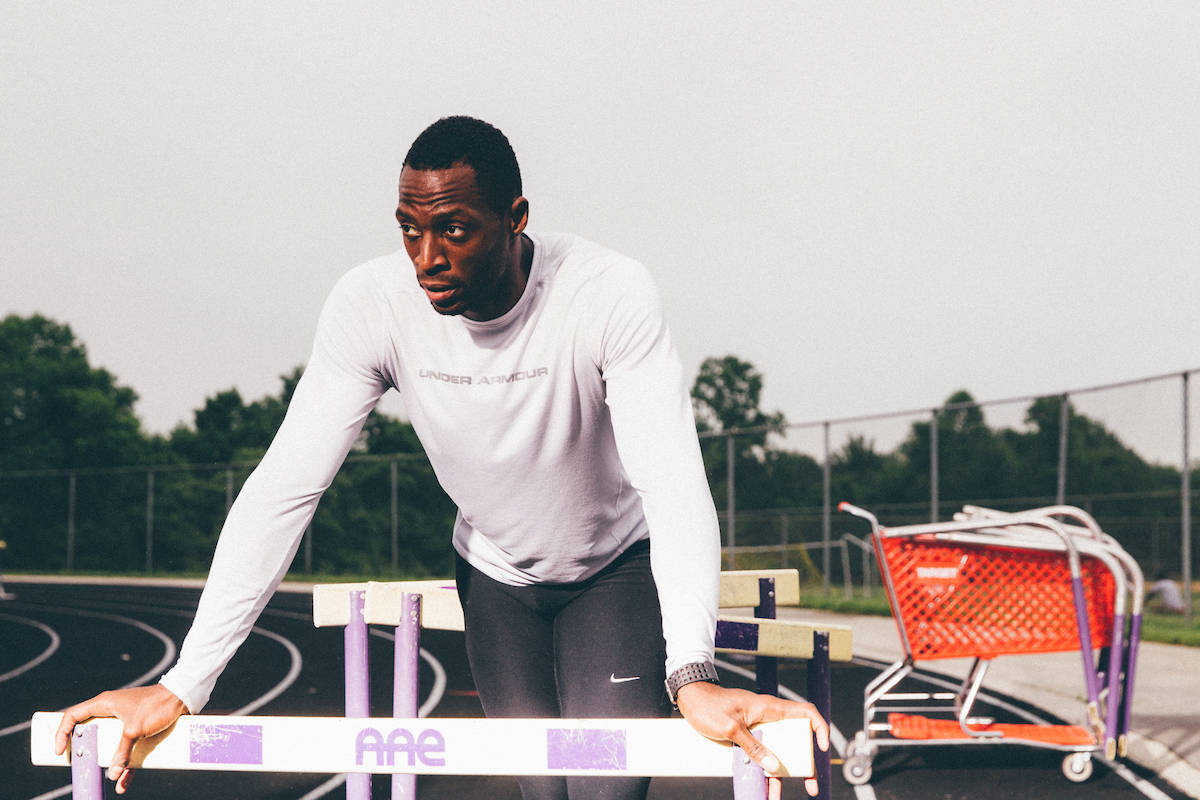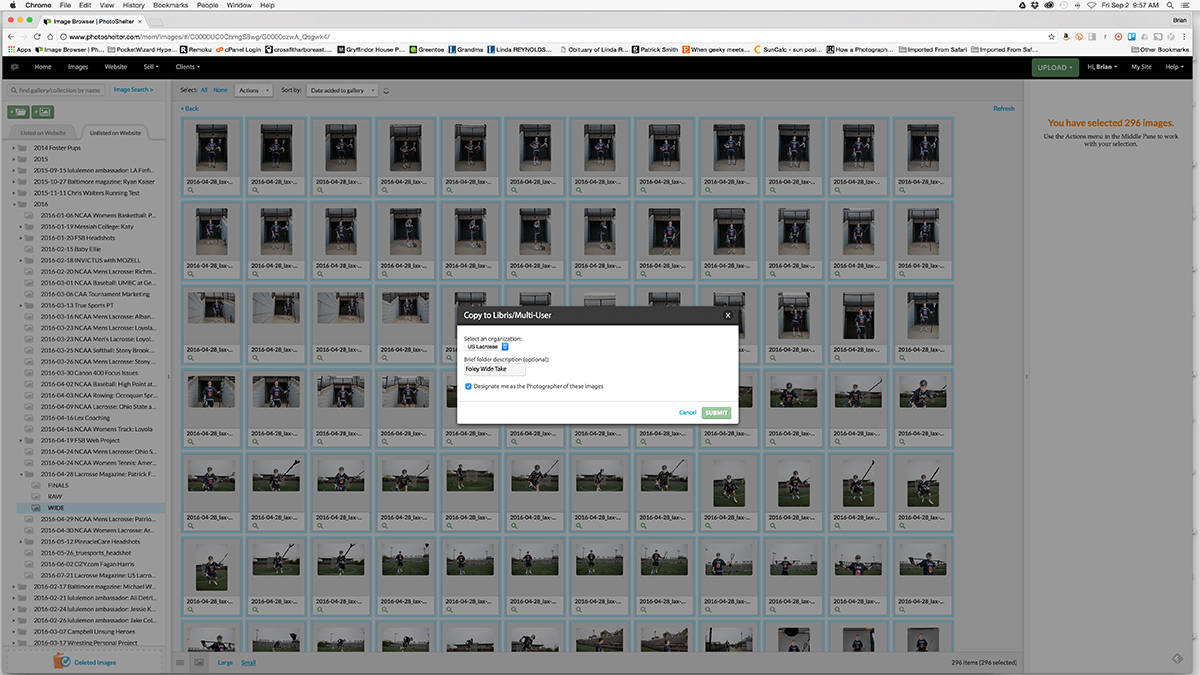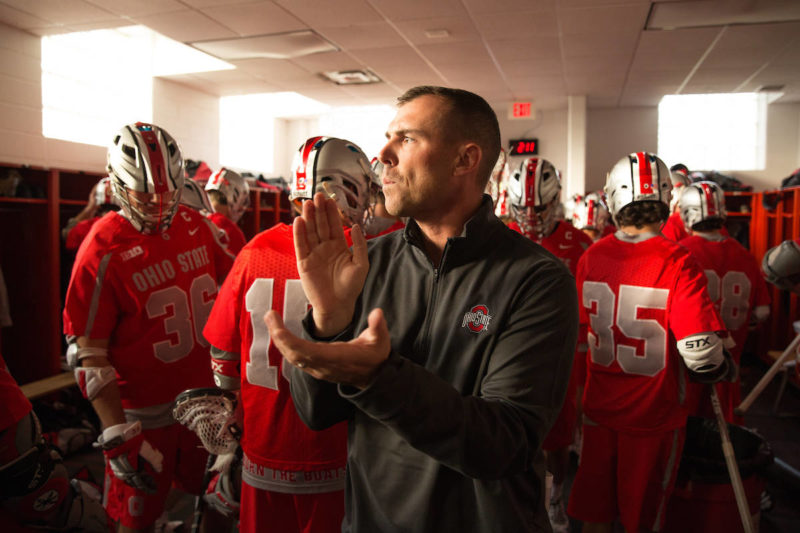The importance of every form of visual content is on the rise as brands compete to stand out. A survey of top marketing executives reveals photography is critical to the marketing strategies of 93% of brands. Brands that distinguish themselves with high quality professional photography and strong storytelling will break through the clutter and catch their audience’s attention.
That’s why we’re talking to top professional photographers to get advice for your brand. First, Allen Murabayashi shared his tips for sourcing rights managed photography. Then, we talked to Michel Leroy about his photo shoot with Adidas and the brand’s VIP influencers. Now, we’ve asked advertising and editorial photographer/director Brian Schneider to share his tips for your brand. Brian works with clients ranging from US Lacrosse to Under Armour to University of Florida. Here are his five tips for your brand’s visual storytelling and workflow.
1. Collaborate.
When your team hires a freelance photographer, you’re not just getting new photos for your visual media library, you’re also getting the opportunity to see your brand’s story through that photographer’s creative eye. It’s important to choose a photographer whose style aligns with your brand.

Brian is constantly researching brands and looking out for campaigns he admires. He says collaboration is key.
“I like when brands want to collaborate – they think my vision will work, and we work together to express their brand visually,” he explains.
The Takeaway: Choose a photographer who’s a fit for your brand, collaborate and give them the creative freedom to bring their own perspective to your messaging.
2. Push the envelope.
As one of the storytellers behind Invictus, a project that uses still and moving imagery to change the outside world’s perception of Baltimore, Brian aims to work with brands that are willing to push the boundaries.
“I enjoy working with clients who want to push the envelope creatively to capture the best content to tell their story,” says Brian.
Brands that take chances and are willing to try new storylines and techniques leave room for a photographer to be inspired and bring something new to the table.

The Takeaway: Henry Ford said, “If you always do what you’ve always done, you’ll always get what you’ve always got.” Push the boundaries with your brand’s visual storytelling and reap the benefits of trying something new.
3. Seek out real stories.
Oftentimes, stories of your brand’s real customers are more impactful than stories your team brainstorms in a meeting. Brands can create a more personal connection with their audiences by finding and connecting with real people who are using their products and services.
This is especially important with industries that rely on communication with your clients and for your clients to trust you. For example, in dentistry, people are more likely to trust you as a dental surgeon if they’ve seen that others have had good experiences with you. As websites like https://www.blog.opencare.com/dentist/dental-marketing detail on their website, video marketing is a great option for dental offices, and so using a real patient’s story in a video will undoubtedly bring in more clientele. Businesses that have close connections with clients or patients will really benefit from this.

Brian says knowing your target customer and telling a personal story that will resonate with them is crucial.
“It’s more authentic to find someone who’s already bought into your brand and tell their story and why they identify with it,” he explains.
He says brands that look for real stories make his job as the photographer easier. His advice for visual storytellers is to humanize and empathize with the subject:
I’m given a set time with my subjects, sometimes 5 minutes, other times hours to connect and find an authentic moment. Sets are contrived situations so my goal is to connect with the people in front of my camera and make them feel at ease. To do this, it’s my belief you must share parts of yourself and experiences with the subject. It builds a layer of trust, rapport and allows the potential for a genuine moment to happen. My goal is to have a conversation in front of my lens.
The Takeaway: Find people who identify with your brand and tell their stories. The authenticity will resonate with the people you’re trying to reach.
4. Make sure the content fits the platform.
Tailor your content to fit each platform, from Facebook to Instagram to a microsite. You can use Instagram to draw people into a story, then use the microsite to go deeper.
“There’s so many ways you can show content,” says Brian. “Figure out what content works for each platform.”
He adds that your visual content should make viewers scrolling through their social feeds stop and pay attention.
The Takeaway: If you’re working with a professional photographer, you’re already on the right track to creating high quality content that will make viewers slow their scroll. Optimize your content to fit each platform you’re using to share your story.
5. Keep the content organized.
When a photographer delivers content to your brand, it’s important to store that content in a secure, easily accessible location. Plus, it’s important for the photographer to know that your team is keeping track of usage rights for the content.

Brian delivers his photos through PhotoShelter, and he works with the client to make sure he names the files according to their naming conventions and includes all of the relevant metadata. If the client uses Libris, he can easily send files from his own PhotoShelter to the Libris account with the click of a button, or he can FTP the photos directly.
“Working with a client who has a visual asset management system, makes my life as a photographer/director much easier,” says Brian. “They have set conventions for metadata and filenames that I’ll use and adhere to, lessing their overall administrative work when I send their files.”

He adds that having a visual asset management system also helps his clients better use the photos they have commissioned. This mirrors survey results that reveal the number one benefit of visual asset management is the ability to maximize every asset in your visual media library.
The Takeaway: Use a visual asset management system to streamline your photographer’s delivery process, and ensure that you are getting the most ROI from the photos you’ve purchased.
Cover photo by Brian Schneider.



